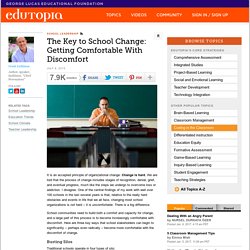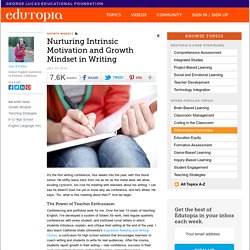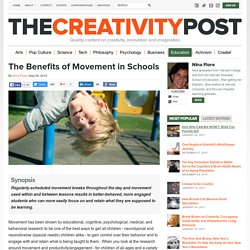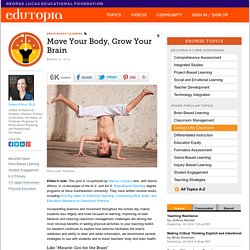

Google Docs - create and edit documents online, for free. The Key to School Change: Getting Comfortable With Discomfort. It is an accepted principle of organizational change: Change is hard.

We are told that the process of change includes stages of recognition, denial, grief, and eventual progress, much like the steps we undergo to overcome loss or addiction. I disagree. One of the central findings of my work with well over 100 schools in the last several years is that, relative to the really hard obstacles and events in life that we all face, changing most school organizations is not hard -- it is uncomfortable. There is a big difference. School communities need to build both a comfort and capacity for change, and a large part of this process is to become increasingly comfortable with discomfort.
Busting Silos Traditional schools operate in four types of silo: Connectivity, the antithesis of silos, is the greatest key to innovation and creativity, which are key drivers of change. Discuss and redefine the term "collegial. " Teacher professional growth plans can be public and celebrated. Taking Risks. Nurturing Intrinsic Motivation and Growth Mindset in Writing. It's the first writing conference, four weeks into the year, with this blond senior.

He stiffly leans back from me as far as the metal desk will allow, exuding cynicism, too cool for meeting with teachers about his writing. I can see he doesn't trust me yet or know why we conference, and he's afraid. He says, "So, what is this meeting about then? " And we begin. The Power of Teacher Enthusiasm Conferencing and portfolios work for me. But I wish the research would point to these systems as consistent and universal means of student growth. Then, two years ago, I read Daniel Pink's Drive and Carol Dweck's Mindset, and I realized that a system of portfolios and conferences was not enough to change student engagement on its own. Intrinsic Motivation. Rationales,Strategies&ResourcesforMovementintheClassroom. The Benefits of Movement in Schools. 352 36Share Synopsis Regularly-scheduled movement breaks throughout the day and movement used within and between lessons results in better-behaved, more engaged students who can more easily focus on and retain what they are supposed to be learning.

The Power of Movement in Teaching and Learning. 20 Indoor Movement Activities. Movement and Learning. Letting kids move in class isn’t a break from learning. It IS learning. Students in Robbi Giuliano’s fifth-grade class sit on yoga balls as they complete their assignments at Westtown-Thornbury Elementary School in West Chester, Pa.

(MATT ROURKE/ASSOCIATED PRESS) Last July I published a post titled “Why so many kids can’t sit still in school today.” It hit a nerve and became one of the most-read pieces on this blog last year, with readers continuing to click on it, along with related posts, such as “The right — and surprisingly wrong — ways to get kids to sit still in class” and “A therapist goes to middle school and tries to sit still. She can’t. Neither can the kids.” Here is a new post on the same subject, by Aleta Margolis, founder and executive director of the Center for Inspired Teaching, a D.C. By Aleta Margolis As an educator for the past 25 years, I’m delighted that our national conversations about teaching and learning are beginning to recognize that excellent instruction engages students intellectually, emotionally, and physically. Local answer-sheet. Move Your Body, Grow Your Brain. Editor's note: This post is co-authored by Marcus Conyers who, with Donna Wilson, is co-developer of the M.S. and Ed.S.

Brain-Based Teaching degree programs at Nova Southeastern University. They have written several books, including Five Big Ideas for Effective Teaching: Connecting Mind, Brain, and Education Research to Classroom Practice. Incorporating exercise and movement throughout the school day makes students less fidgety and more focused on learning. Improving on-task behavior and reducing classroom management challenges are among the most obvious benefits of adding physical activities to your teaching toolkit.
As research continues to explore how exercise facilitates the brain's readiness and ability to learn and retain information, we recommend several strategies to use with students and to boost teachers' body and brain health. Like "Miracle-Gro for the Brain" Exercise may have both a physiological and developmental impact on children's brains. Start the Day with Movement Ms. GoNoodle.